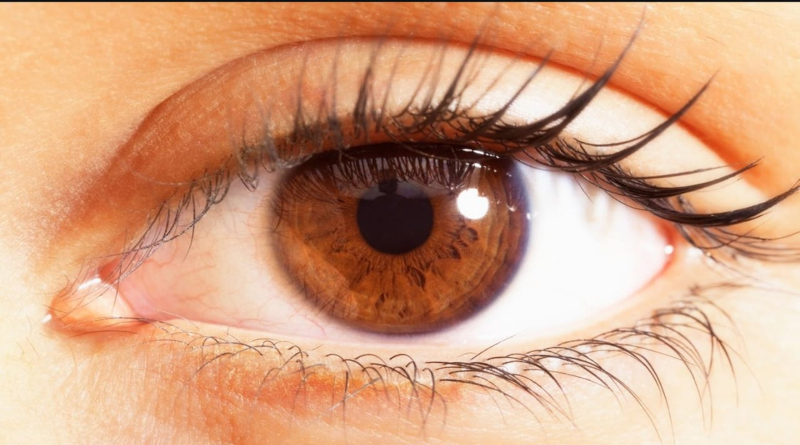EYE DONATION
Every part of the body is important, but without the eyes, man is not only imperfect, but emptied. Even those who have eyes cannot imagine existence without eyes.
The outside of the eye has a transparent membrane. Rays of light enter our eyes through it. This membrane is called cornea , When the cornea becomes opeq it becomes white or smoky and light rays cannot penetrate through the eye. So person becomes blind. But after the cornea is replaced, eye can become active again.
But how to replace this cornea?
Until 1905, no one could have imagined this.
In 1905, Edward Germ and Ramon Castrovijo successfully performed the world’s first eye transplant in the Czech Republic. Thus a great alternative to provide sight to the blind became available. But unfortunately, the awareness about this has not been as expected even after one hundred and fifteen years. The process of public awareness is very slow. But in the last fifteen to twenty years it has gained good momentum. Currently there are eye banks in many medium cities as well. So it is now easily possible to donate the eyes of cadavers. With the availability of eye banks a few hours away from almost any village, the eyebank-team can reach required villege in three to four hours or less and successfully remove the cornea. The cornea must be removed, usually within six hours after death. Then only they can be kept in good condition and be successfully transplanted.
Those who want to donate the eyes of a deceased relative in their home need to do a few things. First of all, it is necessary to get the death certificate of the deceased person, issued by the local doctor or the treating doctor, in which the cause and time of death should be mentioned. Then call the nearest eye bank immediately so that the team can reach the place at the right time. The body may be lying on the ground, the eyelids should be closed if they are open. Provide a pillow under the head so that the head is about six inches above the body. Then apply wet cloth strips on the eyes. If the fan is on, turn it off. If the air conditioning (AC) is there, it should be turned on. Water strips should be changed frequently until the eye retrival team arrives. Care should be taken that the corneas do not dry out.
During the eye retrival the gathered people may be asked wait outside. One or two persons who can stand seeing it can stay there. This process usually takes about half an hour. Once the team arrives, they should be provided with warm water and water for hand washing and a dustbin.
If the death is occurred because of drowning, the cornias would not be useful.
There cornea are tissues so there is no question of blood group matching. . Anyone’s cornea can be fitted to anyone. But the cornea of cadaver with certain infectious diseases cannot be transplanted. For example, if a person who has died of a number of infectious diseases, such as jaundice, AIDS, cancer, and septicemia, then the person who gets the eye by transplant is at risk. Therefore, eye donation of a person suffering from such diseases cannot be done
After the eye is removed, there is a method of removing a small amount of blood from the body, which can be used to test whether the body has any of these symptoms. People of any age can donate eyes but sometimes the eyes of an elderly person may not be useful for transplantation but can be useful for research. Therefore, the relatives of the deceased should not re consider donating eyes. As research is also a necessity. An example of how research can benefit. Recent research on the eye has found that the cornea has two layers. So one cornea can be converted into two corneas. Therefore, eye donation of a dead person was able to give sight to two persons in the past but now it can give sight to four persons. This means that the need for eye donation has halved. How big is the benefit of this research? So even if the eyes are not suitable for transplantation, relatives should definitely donate their eyes by insisting on using such eyes for research. The structure of the eye is the most complex. The structure of the brain is followed by the structure of the eye. A lot of research is needed on the eye. Therefore, if the patient’s relatives allow, the entire eyeball can also be removed. Which are required for research. There is still no cure for retinal blindness. When the entire eye, i.e. the eyeball, is removed, another artificial eyeball is inserted into the groove, and the eyelids are closed. So there is no ugliness or defirmation on the face. So there is no problem in recommending that the whole eye should also be given for the usefulness of the research. India accounts for 25% of the world’s blind people. As of 2018, there are a total of 5.2 million blind people in India. (And about 35,000 new blind people are added every year.) Of that, 4.6 million are blind due to the cornea. Their blindness can certainly be removed by eye donation. But unfortunately, in our country, only 10 to 15 thousand people donate their eyes every year.
Eye transplant surgery is a proven procedure with many years of success and experience. The success rate of these surgeries is 90 percent. Therefore, almost all eyes of donors can be successfully transplanted to give vision to blinds.
Some persons think that filling a pledge form for eye donation is sufficient. But this process is inadequate. If eye donation is to be successful, you need to make your close relatives, your heirs fully aware of this, even after you have signed the pledge form . It is important to give the complete information to the family members about eye donation. Only when they are fully satisfied, and realize that it is their responsibility to donate eyes, then only donation becomes successful. So the most important thing is to fill the pledge form and inform all the members of your family about it and prepare them for it.
In our country, only one per cent of the total number of pledge form fillers can become actual eye doners.. This means that the most important and necessary thing is to awaken the family members to make a real eye donation rather than the act of filling up a pledge form.
Anyone of any age can donate an eye. Anyone who has any type of eye-number or has cataract or glaucoma surgery or has diabetes and high blood pressure can definitely donate an eye after death. If a person dies in an accident, Eye donation can be done legally but with the permission of the local police officer, as it has to be done before the postmortem. Blind people who have good corneas but are blind due to some other defect can also donate eyes. The nearest eye bank number should be written on the calendar in your home or somewhere. In this case, I would like to say one more thing. In rural areas, outside the Gram Panchayat and Primary Health Center, as well as in banks, post offices, etc., outside the private hospital, the phone number of the nearest eye bank should be displayed on a board. If that happens, it will not take anyone to rush to find the eye bank number Also the national number 1919 is a toll free number and if you call this number and tell your location, you can get the number of your nearest eye bank from them. So you don’t have to rush to find the eye bank number in time. After the eye donation, the relatives of the deceased are never told to whom the eyes are given, but the only information that can be obtained is whether the eyes were used for transplant or not.
Every person should take proper care of one’s eyes while they are alive, so that after death their eyes will be useful for a blind person.
The most important part of the eye is the cornea, then the lens, then the retina are the most important parts of the eye. There is a fluid between the cornia and the retina. The pressure of this fluid is properly controlled. But if for some reason that pressure increases, eye disorders occur. This can lead to glaucoma. Glaucoma is more common in diabetics nowadays. For this, it is necessary for the youth to get a complete eye examination once in two years and once in six months after the age of fifty. This means that if a disease is diagnosed at the right time, it can be cured by treating it. Every living person must take proper care of his own eyes.
Not only eye donation but also organ donation as a whole is discussed in the section on organ donation. Also you can refer a writeup about organ donation and religion to get the regilious misbeliefs about these donations. Therefore, we will realize that no religion is opposing eye donation. Everyone should pledge to donate eyes with the feeling that eye donation is a sacred act. Eye donation is a work of humanity and a national duty.




